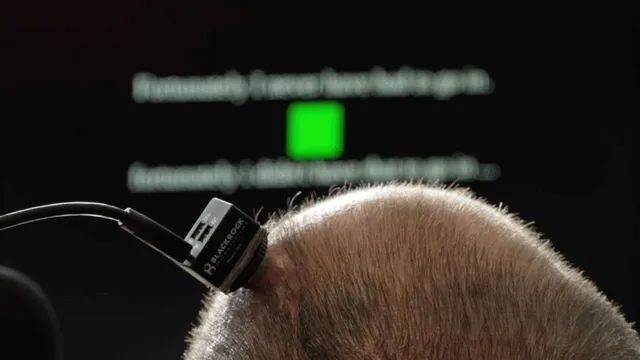
New brain-computer interface restores voice for paralyzed individuals
2025-07-01 06:00- A new brain-computer interface system allows people with speech loss to communicate using their neural signals.
- The system translates thoughts into speech nearly instantly and can clone the user's voice.
- This technology marks a significant advancement in assisting individuals with paralysis to engage in conversations.
Express your sentiment!
Insights
In a pioneering effort at the University of California, Davis, researchers have created an innovative brain-computer interface (BCI) system that enables paralyzed individuals to engage in real-time conversation. This technology arose from the need to assist those who have lost the ability to speak due to neurological conditions like ALS. The new BCI system uses four microelectrode arrays implanted in the speech production areas of the brain, which translate neural signals into spoken words almost instantaneously. This approach stands in stark contrast to earlier systems that could only translate brain signals into text, resulting in slow and unnatural communication. The system captures the electrical activity generated when an individual attempts to speak, interpreting these signals to produce audible speech through a computer. By utilizing a voice cloning algorithm trained on the user's voice prior to their condition, the system can replicate their unique vocal qualities and nuances, making conversations more expressive and natural. So far, this groundbreaking communication aid has been tested with a single participant, highlighting the transformative potential of this technology while indicating the need for further studies. The researchers are focused on enrolling more participants in ongoing clinical trials to refine the system and evaluate its effectiveness for individuals with diverse speech impairments. The ability to communicate using their own voice and personality allows users to regain autonomy in their conversations, facilitating more meaningful interactions with family and friends. Prior BCI technologies often limited users to a slow and cumbersome method of communication that hindered social engagement. The current advancement, however, allows individuals not only to express themselves more fluidly but also to convey various vocal nuances, such as articulating questions or emphasizing points, which significantly enhances the relational dynamics. Though the BCI system represents a significant leap in technology, researchers acknowledge that more work is necessary to ensure its applicability across a broader spectrum of speech loss cases, such as those resulting from strokes or other neurological disorders. As this technology evolves, it holds the potential to redefine communication for many, reinstating a sense of connection and involvement in daily life for those who have been rendered voiceless by disability. Ultimately, this research could lead to profound changes in how society approaches assistive technologies and the experience of living with communication challenges.
Contexts
In recent years, brain-computer interface (BCI) technology has made significant strides, enhancing our understanding of the brain and its potential applications. BCIs allow for direct communication between the brain and external devices, enabling individuals to control computers, prosthetic limbs, and even other electronics purely through thought. The advancements in neuroimaging techniques and machine learning algorithms have played a crucial role in enabling more accurate monitoring of brain activity and translating it into actionable commands. As a result, the field has opened up numerous possibilities for individuals with mobility impairments, providing them with greater independence and improving their quality of life. Investigations into non-invasive BCIs have gained substantial traction, with researchers developing EEG-based systems that are user-friendly and accessible. These systems measure electrical activity in the brain through sensors placed on the scalp, avoiding the need for surgical implants. Recent developments have showcased the effectiveness of these systems in various applications, from gaming and virtual reality environments to rehabilitation therapies for stroke patients. The integration of BCIs into everyday technologies presents a unique opportunity to change how humans interact with machines, leading to more intuitive user experiences. Moreover, ethical considerations and privacy concerns surrounding BCI technology remain pivotal topics of discussion within the research community. As these interfaces become more sophisticated, the potential for misuse or unintended consequences increases, highlighting the need for regulatory frameworks that ensure the responsible development and deployment of BCI applications. Establishing guidelines that prioritize user consent and data protection is crucial to creating trust in these technologies. Researchers are also focusing on addressing the long-term effects of BCI usage on users, ensuring that the benefits outweigh any potential risks involved. Looking ahead, the next phase of BCI development is likely to see an intersection with artificial intelligence, further refining the accuracy and responsiveness of these systems. Collaborations between neuroscientists, engineers, and ethicists are essential for fostering innovation while safeguarding human rights. Continued investment in research and development will be vital in overcoming current limitations, enhancing the practicality of BCIs, and broadening their accessibility. The horizon is promising, with the potential to revolutionize numerous fields, from medicine to entertainment, paving the way for a future where humans can seamlessly communicate with technology.